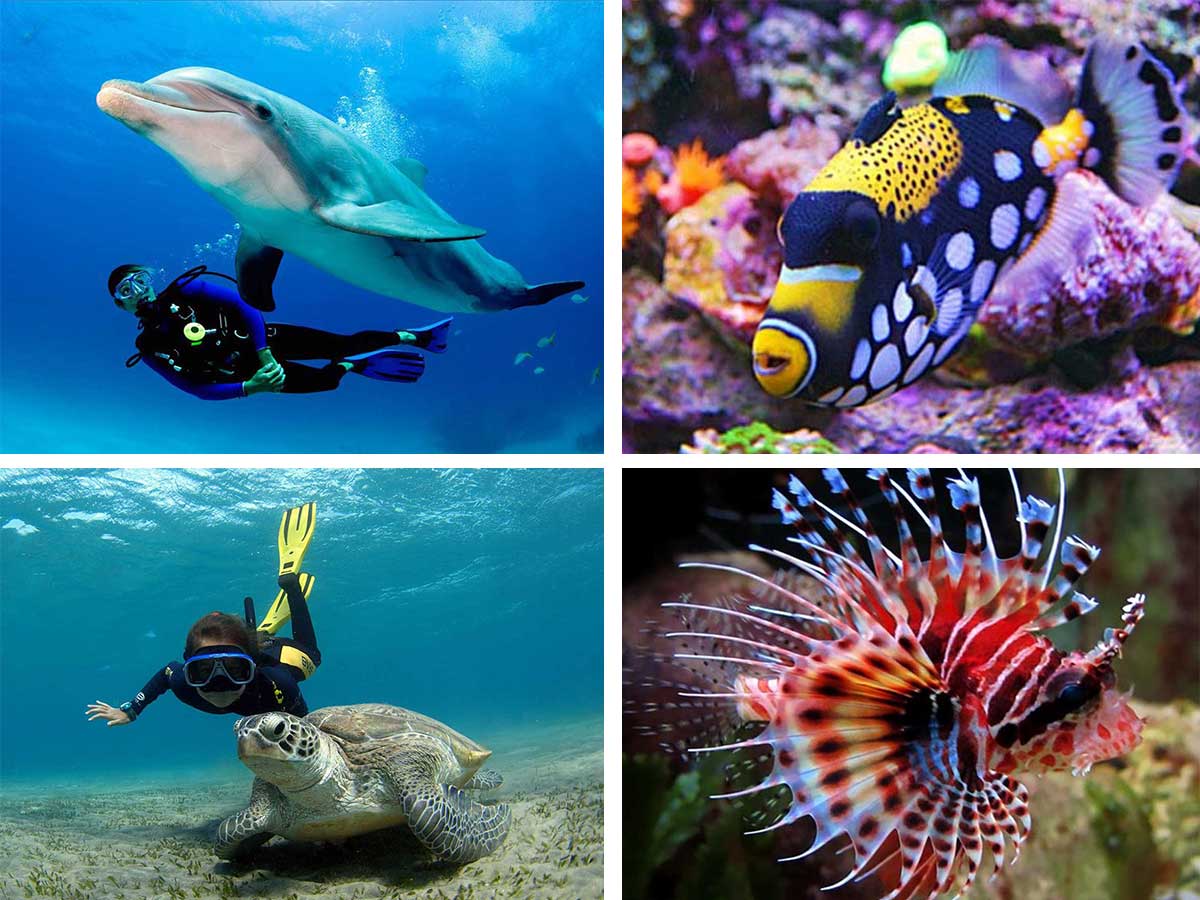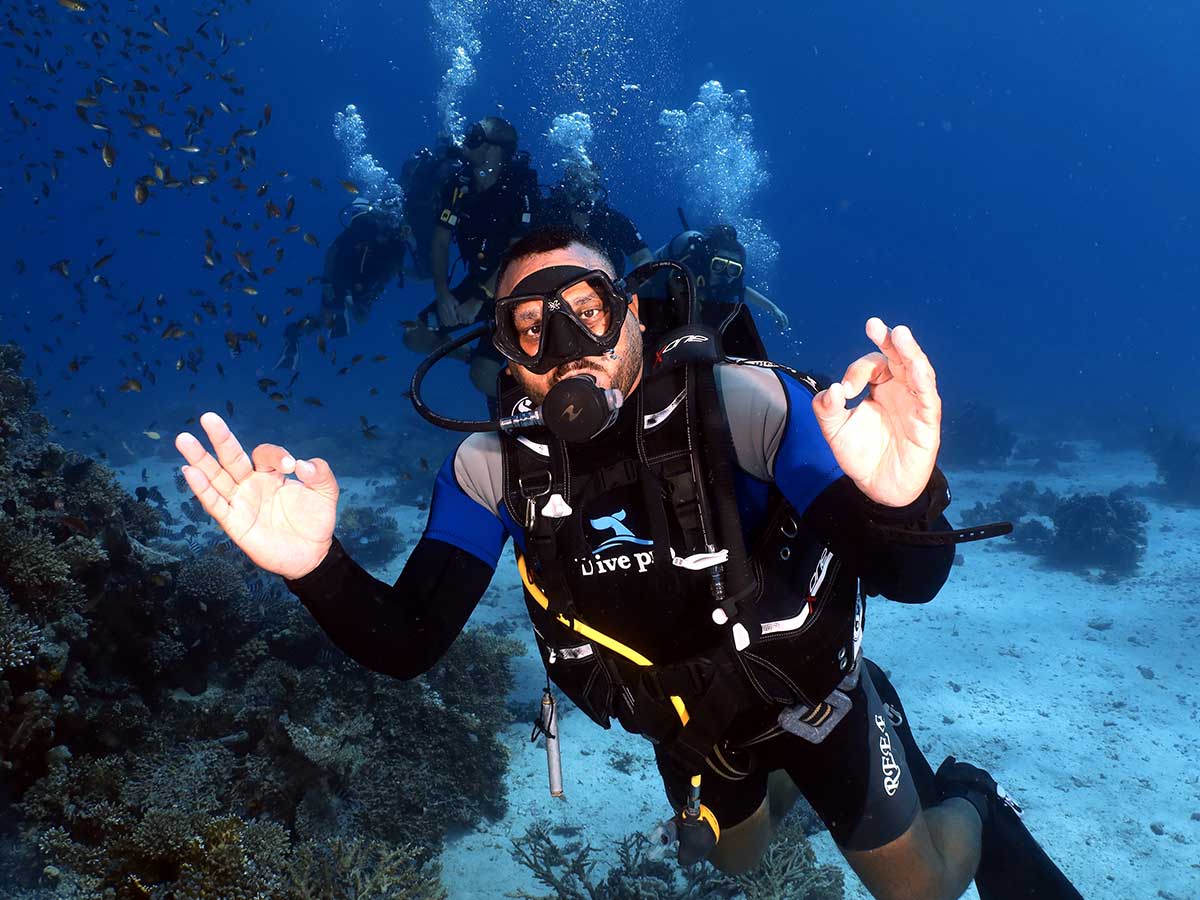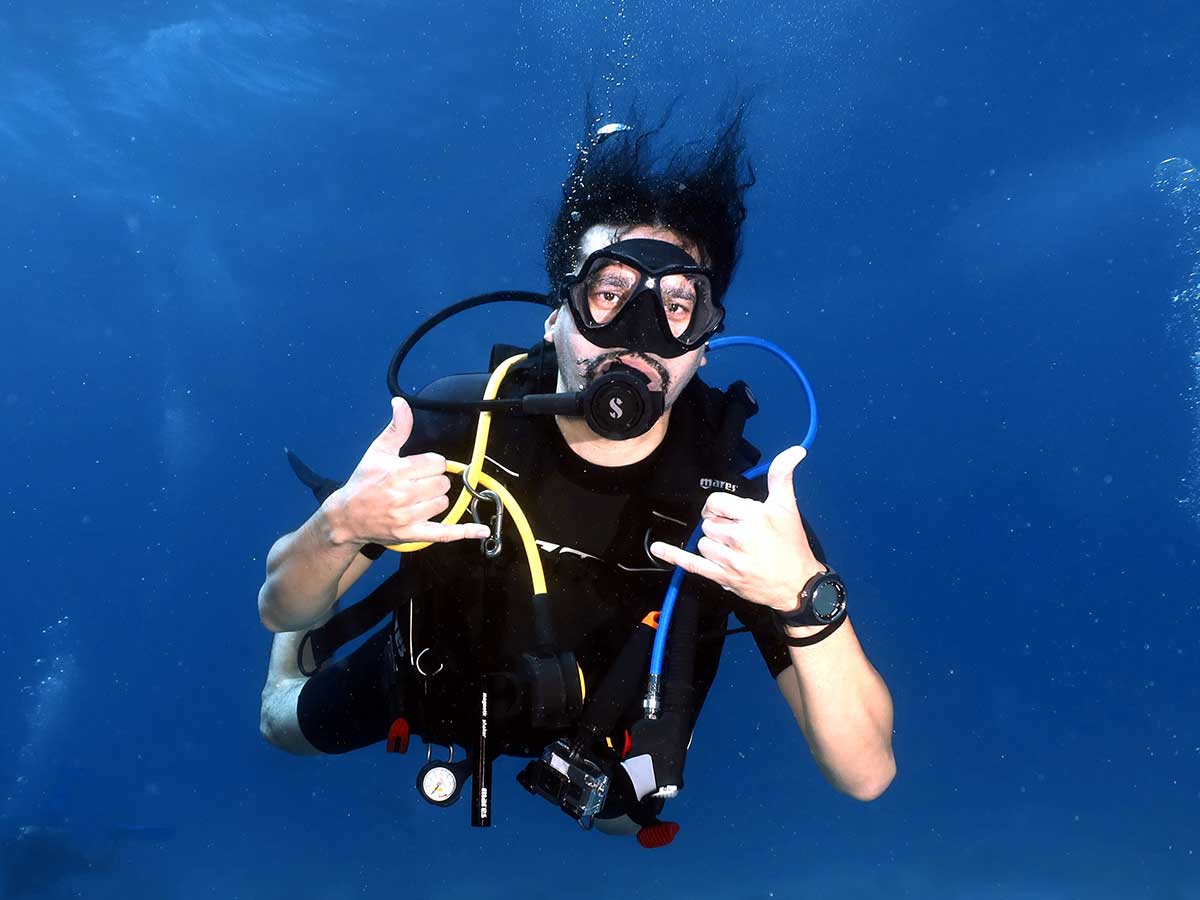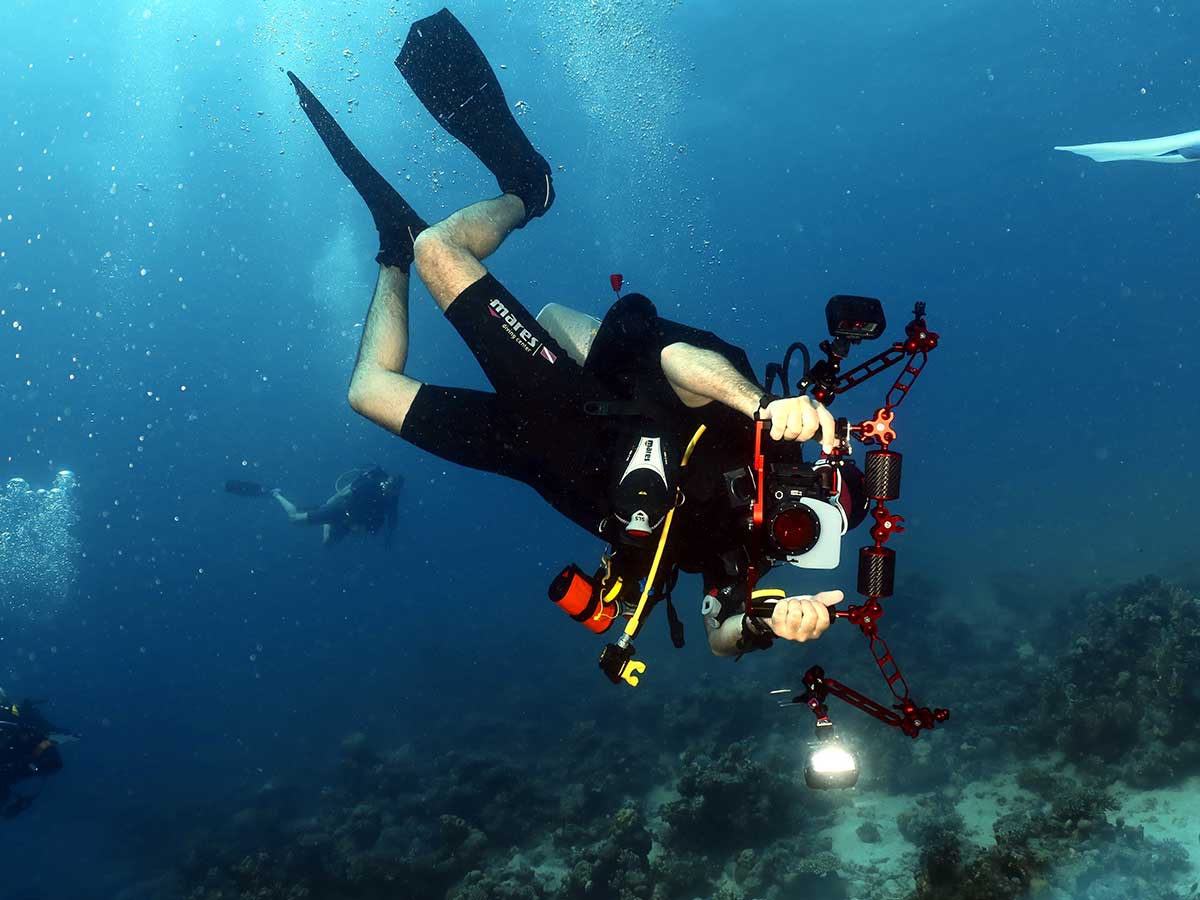Experience the ultimate adventure of diving in Egypt’s mesmerizing Red Sea with Diving in Hurghada! Explore pristine coral reefs, vibrant marine life, and awe-inspiring underwater landscapes. Discover why Egypt is a haven for scuba diving enthusiasts. Book your thrilling dive adventure now!
The Country of Egypt
Egypt is a nation that has a foot in both Africa and Asia, bordered by the Mediterranean Sea to the north and the Red Sea to the east. It is renowned for its ancient history, as it is considered to be the land of the Pharaohs and a cradle of civilisation. This cultural legacy makes it an attractive travel destination, with a plethora of wonderful diving spots.
The climate of Egypt is very hot and arid, primarily composed of desert. There is an abundance of spectacular sunshine and vibrant blue waters
that make the coastline a highly appealing destination for scuba divers, which has been the case since the 1950s. It is still considered one of the best places for underwater exploration.
Fact File
| Capital | Cairo |
| Population | 106,000,000 |
| Languages | Egyptian Arabic |
| Time | GMT +2 |
| International Dialling Code | +20 |
| Currency | Egyptian Pound, E£ (EGP) |
| Air Temperature (average) | 14°C – 30°C |
| Water Temperature (average) | 20°C – 28°C |
| Tourist Board | https://mota.gov.eg/ |
| International Airports | Cairo International Airport (CAI), Borg El Arab (HBE), Hurghada (HRG), Sharm El Sheikh (SSH), Marsa Alam (RMF), Sohag (HMB), Assiut (ATZ), Luxor (LXR), Aswam (ASW). |
All About Diving
Heading to the Red Sea in Egypt is a dream come true for divers from all levels. It’s an excellent diving destination that offers a short flight from the UK
and is popular for its crystal-clear blue waters. The sea holds more than 200 species of coral and 1,200 species of fish, with 20% only found here. The reefs are in perfect condition, offering chances to witness dolphins, sharks, and turtles. Wrecks, shallow reefs, and drop-offs are just some of the amazing sites that will make divers keep coming back.
When it comes to diving in Egypt, you can opt for either liveaboard or resort options. Liveaboards offer the opportunity to explore the more remote areas, such as the Deep South,
as well as the popular dive sites like the Thistlegorm,
Ras Mohammed and the Brothers. Onboard these trips,
you will be provided with meals and diving, so you can be sure to get the most out of your experience.
If you are drawn to a resort destination, have non-diving family or friends, or wish to partake in a range of activities, there are abundant choices. Selecting your base can be difficult. Dahab is a beach resort devoted to diving,
renowned for its cost-effective dive packages and as a great place to learn to dive. Sharm El Sheikh is an excellent base for exploring the Straits of
Tiran and Ras Mohammed National Park as well as having a beach holiday. Hurghada is a major liveaboard hub,
but it also has a wealth of local reefs, access to a wide variety of resorts and is a great base for visiting Luxor and the ancient sites while still diving. Lastly,
Marsa Alam, entryway to the deep south, offers
outstanding diving and 5 star and simpler dive centre beach camp lodgings to suit any taste and budget.
The Red Sea offers a plethora of amazing dive sites! We have compiled a list of some of our favourites, from north to south for your next underwater adventure.
The Blue Hole and Canyon
A vast, impressive feature of the landscape is the Blue Hole and Canyon, which is a popular destination for those seeking outdoor recreation. The deep blue waters of the hole and the towering walls of the canyon make for a spectacular sight. Visitors can explore the area by swimming,
fishing, and exploring the surrounding area, or simply taking in the natural beauty of the area. Whatever their chosen activity, visitors are sure to be enchanted by this unique landscape.
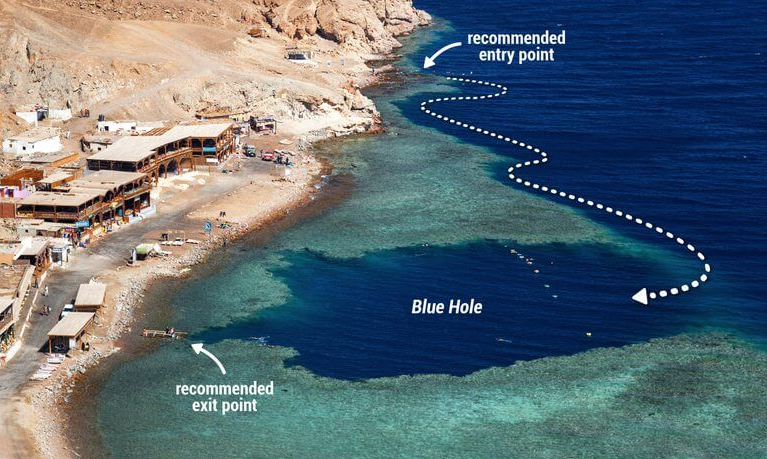
The Blue Hole is a well-known attraction in Dahab, a 100m deep sinkhole with a wonderful view and vibrant corals. Pelagic fish such as barracuda and tuna can be found in the waters. The nearby Canyon features remarkable reefs with turtles, bannerfish, and remarkable topography and structures, including pinnacles and a cavern full of glass and hatchetfish.
The Jackson Reef
This particular reef is located in the Red Sea and is known for its abundant coral and fish populations. It is a popular destination for divers, as the reef is made up of many diverse habitats and provides a spectacular view. The reef is made up of large, shallow areas that are perfect for snorkeling, as well as deep crevices and canyons which are ideal for scuba divers. The reef is home to a variety of marine life, including coral, fish, octopuses, mollusks, crustaceans, and other species. It is an important part of the marine ecosystem and serves as a refuge for many species.
In the Straits of Tiran, Jackson Reef is home to some of the most attractive coral gardens in the Red Sea. From clownfish to jackfish and sharks, the range of marine life on display is impressive. For those looking for something a bit more challenging, the Lara, a sunken Cypriot freighter from 1981, is the go-to choice.
The SS Thistlegorm
This particular vessel is a well-known wreck in the Red Sea that has been explored by divers from all over the world. It was sunk during World War II and is now a popular destination for recreational divers. The ship is full of interesting artifacts and artifacts from the time of its sinking, making it an extremely fascinating dive site.
Divers with an advanced certification can explore this 128m WWII British cargo shipwreck, which has an amazing history. It rests at a depth of 30m and is surrounded by a diverse array of marine life. The blast that caused it to sink in 1941 destroyed the middle section of the ship, making it easy to gain access to the inside. The hold contains a variety of trucks, munitions, motorbikes, and tanks. An unforgettable dive awaits those brave enough to take the plunge.
Yolanda Reef and Sharks
The connection between Yolanda Reef and sharks is an intriguing one. It’s an interesting relationship that is worth exploring. Sharks have been known to frequent this shallow reef, making it one of the few places in the world where these apex predators can be viewed in their natural habitat. It’s a unique opportunity to observe sharks in a safe and controlled environment, and it’s something that makes Yolanda Reef a special and unique destination.
At Ras Mohamed National Park, three pinnacles ascend to just beneath the surface and the renowned Yolanda wreck with its shipment of toilets make for an amazing dive spot. The kaleidoscopic corals that envelop these formations are thriving and full of life, from small nudibranchs to inquisitive jacks; something thrilling can be found in every direction.
The relationship between two siblings is often viewed as that of the older, Big Brother, and the younger, Little Brother.
Exploring the seven dive sites in the area is a great opportunity for divers to observe wrecks, fringing coral reefs, plush soft corals, steep walls, and drift dives; plus it is a chance to spot sharks, such as hammerheads and Whitetips. Big and Little brother are truly worth taking the time to take multiple dives to investigate them thoroughly.
The name Elphinstone is renowned in many circles. It is well known for its impressive reputation and significance.
Elphinstone is known for its oceanic whitetips, hammerheads and the possibility of encountering mantas and whalesharks during certain times of the year. Wall dives here are remarkable and when drifting, divers can expect to pass through a sea of soft corals and a swarm of anthias. Additionally, there is always the possibility of seeing a sharky figure coming out of the deep blue.
Raging Rapids
The powerful and intense movements of the water at Fury Shoals have been a source of awe and fear for centuries. For centuries,
people have been in awe and filled with dread at the fierce movements of the waves at Raging Rapids.
Visitors to the southern Egyptian Red Sea will be treated to the sight of exquisite hard and soft corals at Fury Shoals. This area is a haven for numerous species including spinner dolphins, turtles, sharks, manta rays, octopus, and nudibranchs. Furthermore, the rare dugong can often be spotted here, making it an ideal destination for wildlife viewing.
St Johns University
can be seen as a beacon of knowledge, providing an education that is both rigorous and rewarding. It is renowned for the quality of its academic programs, as well as its commitment to fostering an environment
in which students can thrive. The school offers a wide range of majors and minors, as well as a variety of extracurricular activities,
allowing students to explore their interests and develop their talents. Additionally, St Johns has a strong sense of community, with a culture that is both welcoming and supportive. As a result, the school has established itself as a leader in higher education, providing an education that is both intellectually stimulating and academically rigorous.
St Johns is a site boasting a large area of 110 sq. miles situated in the Deep South. It consists of a wide coral reef, with coral walls, gardens, and caves. Offering a great variety of diving experiences, the remote spot offers some of the best reefs in the area with a wealth of marine life.
It is possible to dive in the Red Sea no matter the season. June to August can be quite hot on the surface, but the sea breeze will give you relief and the sightings of hammerhead sharks on the outer reefs make it worth the warmth. However, March to May and September to November offer the best conditions, with comfortable water temperatures and great weather.
Scuba Diving in Egypt: Hurghada – A Paradise Underwater

Egypt, the land of Pharaohs and Pyramids, is more than just a historian’s dream. It’s a paradise for scuba divers, offering some of the most stunning underwater experiences on the planet. From the warm, inviting waters of the Mediterranean to the rich biodiversity of the Red Sea, Egypt offers a unique blend of spectacular marine life, crystal clear waters, and sunken treasures that make it a top destination for underwater exploration.
About Scuba Diving in Egypt
Egypt is renowned for its ancient history and cultural heritage, but it is also a leading destination for scuba diving. Blessed with over 1,800 miles of coastline, the country boasts both Mediterranean and Red Sea diving sites that offer a variety of underwater environments, each unique and breathtaking in its own right. From vibrant coral reefs teeming with marine life to mysterious underwater ruins and shipwrecks, Egypt offers an unparalleled diving experience that caters to all levels of divers, from beginners to seasoned professionals.
Why Choose Egypt for Scuba Diving?
There are numerous reasons why Egypt is a top choice for scuba diving. Here are a few compelling ones:
- Diverse Dive Sites: Egypt offers a wide variety of dive sites that cater to different interests and skill levels. From shallow reefs to deep chasms and historic shipwrecks, there’s something for everyone.
- Rich Marine Life: Home to more than 1,000 species of fish and over 200 species of corals, Egypt’s underwater world is a riot of colors and shapes.
- Excellent Diving Conditions: With little rainfall, high evaporation, and a relatively isolated location, the Red Sea offers excellent visibility, making it a diver’s dream come true.
- Affordable Diving: Compared to many other diving destinations around the world, Egypt offers high-quality diving experiences at very affordable prices.
Hurghada – The Jewel of the Red Sea
Located on the Red Sea coast, Hurghada is one of Egypt’s most popular diving destinations. Once a simple fishing village, Hurghada has transformed into a thriving tourist hub, attracting divers from around the world with its stunning coral gardens, diverse marine life, and crystal-clear waters.
Hurghada Diving Highlights
Here are some of the diving highlights that Hurghada offers:
- Vibrant Coral Reefs: Home to some of the most vibrant coral reefs in the Red Sea, Hurghada is a paradise for divers. The reefs are teeming with marine life, offering divers a chance to get up close and personal with an array of colorful fish and invertebrates.
- Sunken Shipwrecks: For those who have a penchant for history, Hurghada offers a chance to explore sunken shipwrecks. These underwater relics provide a fascinating glimpse into the past and serve as artificial reefs, attracting a variety of marine organisms.
- Diverse Marine Life: From colorful reef fish to larger pelagic species such as barracuda, tuna, and even sharks, Hurghada’s underwater world is teeming with life. Divers can also expect to see a variety of invertebrates, including octopuses, nudibranchs, and shrimp.
- Excellent Visibility: Thanks to the Red Sea’s high salinity and lack of river tributaries, Hurghada offers excellent visibility, often exceeding 20 meters. This makes it an ideal location for underwater photography.
The Best Time to Dive in Hurghada
Scuba diving in Hurghada is possible year-round, thanks to its warm, tropical climate. However, the best time to visit depends on what you want to see. The summer months (July to September) offer the warmest water temperatures, which can reach up to 30°C (86°F), and are the best time to spot large pelagic species.
For those interested in diving with sharks, the winter months (January to March) are the best time to visit. During this time, water temperatures can drop to around 22°C (72°F), and visibility can exceed 40 meters. The cooler waters attract a variety of shark species, including hammerhead, white-tip and grey reef sharks.
Learning to Dive in Hurghada
Whether you’re a novice diver looking to get certified or an experienced diver seeking advanced courses, Hurghada offers a wide range of diving courses and programs. For beginners, introductory dives and PADI Open Water Diver courses are available, offering a safe and enjoyable way to learn to dive.
If you’re already a certified diver, Hurghada also offers advanced courses, such as wreck diving and night diving. These courses provide an opportunity to hone your skills and explore new diving environments.
Dive Liveaboard Safaris in Hurghada
For those looking to maximize their diving experience, liveaboard safaris are an excellent option. These trips offer the chance to dive multiple sites
in a single day and explore areas that are not usually accessible from shore.
Liveaboards in Hurghada are equipped with all the necessary amenities and safety equipment, ensuring a comfortable and safe diving experience. These trips typically include meals, accommodation, and multiple daily dives.
Preparing for Your Diving Adventure
Before embarking on your diving adventure in Hurghada, there are a few important things to consider:
- Equipment: Most dive centers in Hurghada provide all necessary equipment. However, if you have your personal gear, it’s advisable to bring it along, as you’re likely to be more comfortable using equipment you’re familiar with.
- Health: Ensure you’re in good physical health before diving. If you have any medical conditions that could affect your ability to dive, consult a doctor before your trip.
- Certification: If you’re planning on doing any advanced dives, make sure you have the appropriate certification. If you’re a beginner, consider taking a diving course in Hurghada.
- Respect the Environment: Remember that the underwater world is a delicate ecosystem. Always follow good diving practices to protect the environment. Avoid touching or disturbing marine life, and don’t leave any trash behind.
Scuba diving in Hurghada offers an unforgettable underwater adventure. With its stunning coral reefs, diverse marine life, and excellent diving conditions, it’s no wonder that it’s considered one of the best diving destinations in the world. Whether you’re a seasoned diver or a complete beginner, Hurghada promises a diving experience like no other. Dive in and discover the underwater treasures of Egypt’s Red Sea.
FAQs: Scuba Diving in Egypt Red Sea
Discover the FAQs about scuba diving in Egypt’s Red Sea. Find answers to questions about dive sites, marine life, water temperature, and more. Plan your diving adventure with confidence today!
Are you an avid scuba diver looking for your next underwater adventure? Look no further than the stunning Red Sea in Egypt. With its crystal-clear waters, vibrant coral reefs,
and diverse marine life, scuba diving in the Red Sea is a must for any diving enthusiast. In this article, we will answer some frequently asked questions
(FAQs) about scuba diving in Egypt’s Red Sea, so you can plan your dive trip with confidence.
Is scuba diving in the Red Sea suitable for beginners?
Absolutely! The Red Sea offers a wide range of dive sites suitable for divers of all levels, including beginners. Many diving centers and resorts in
Egypt’s Red Sea provide comprehensive training programs and certification courses for those new to scuba diving. With the guidance of experienced instructors, beginners can explore the shallow reefs and gradually gain confidence and skills underwater.
What are the best dive sites in the Red Sea?
The Red Sea is renowned for its incredible dive sites,
but there are a few that stand out among the rest. Some of the top dive sites in Egypt’s Red Sea include:
- The Blue Hole: Located in Dahab, this iconic dive site offers a vertical drop-off that leads to a stunning underwater cavern.
- Ras Mohamed National Park: Known for its breathtaking coral formations and abundant marine life, this protected area is a diver’s paradise.
- The Brothers Islands: These two islands are home to stunning coral walls, pelagic species, and even the occasional shark sighting.
- Thistlegorm Wreck: A must-visit for wreck diving enthusiasts, this World War II cargo shipwreck is now an artificial reef teeming with marine life.
What marine life can I expect to see in the Red Sea?
The Red Sea is teeming with a rich variety of marine life, offering divers unforgettable encounters beneath the surface. From colorful coral reefs to majestic pelagic species, this underwater world has it all. When diving in the Red Sea, you can expect to see:
- Colorful coral gardens: The Red Sea boasts an impressive array of hard and soft coral species, creating vibrant and picturesque landscapes.
- Tropical fish: Schools of colorful angelfish, butterflyfish, and parrotfish are commonly seen darting in and out of the coral formations.
- Turtles: Green and hawksbill turtles are frequently encountered during dives, gracefully gliding through the water.
- Dolphins: The Red Sea is home to several species of dolphins, and lucky divers may just have the chance to swim alongside these intelligent creatures.
- Sharks: Although not guaranteed, the Red Sea is known for occasional encounters with various shark species, including reef sharks and hammerheads.
When is the best time to go scuba diving in the Red Sea?
The Red Sea offers great diving conditions throughout the year,
but the best time to go scuba diving depends on your preferences. The peak diving season in the Red Sea is from March to May and September to November. During these months, the water is warm, visibility is excellent, and marine life is abundant. However,
even during the off-peak months, the Red Sea still offers fantastic diving opportunities, with fewer crowds and potentially lower prices.
What is the average water temperature in the Red Sea?
The average water temperature in the Red Sea varies depending on the season. In the summer months (June to August), the water temperature can reach a comfortable 27-30°C (80-86°F). During the winter months (December to February), the water temperature tends to drop to around 21-24°C (70-75°F). However,
it’s important to note that these are average temperatures, and certain areas within the Red Sea may have slightly different conditions.
Conclusion
Scuba diving in Egypt’s Red Sea offers a world-class underwater experience for divers of all levels. Whether you’re a beginner or an experienced diver,
the Red Sea’s stunning dive sites, diverse marine life, and comfortable water
temperatures make it a must-visit destination for any diving enthusiast. So pack your gear, dive into the Red Sea, and create unforgettable memories beneath the surface.
